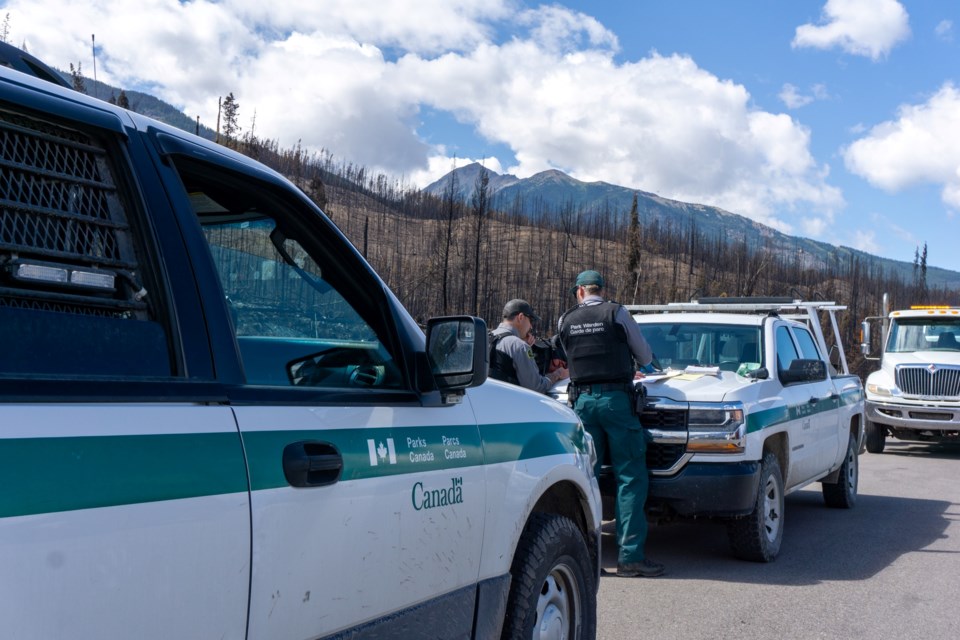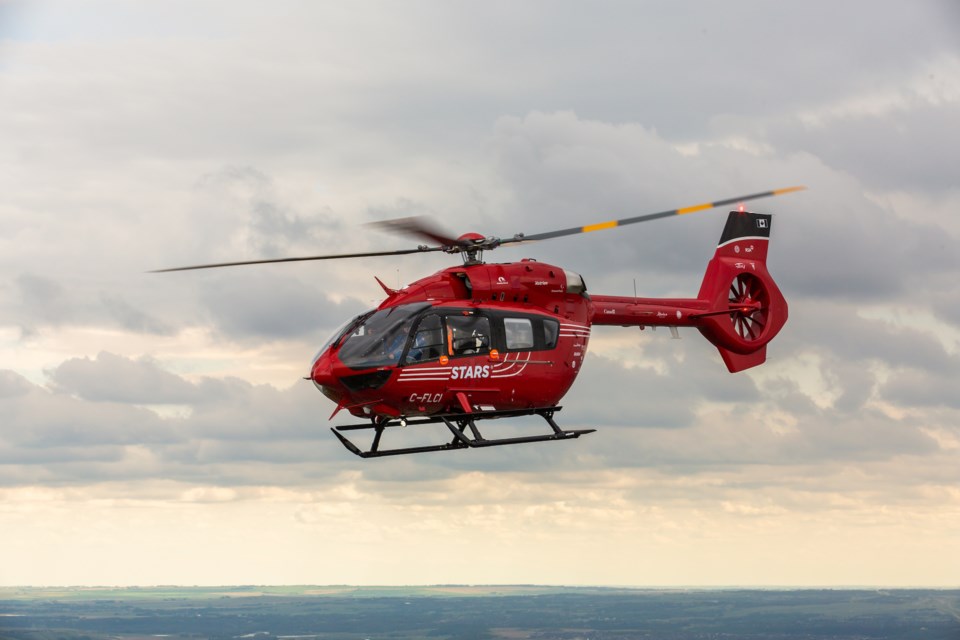The operator of Alberta’s air ambulance service says its personnel and vehicles are being impacted by laser pointers and drones 10 times more often than in 2020.
“We’ve seen a significant increase in the in the numbers and that's not only with us, but in industry as well,” Frank Eigenbrood, STARS director of safety and quality said Friday.
There have been five such incidents in 2024. There were 11 in 2023, with more taking place during winter months, according to a spokesperson.
“Between 2020 (and) 2023, we saw a 1,000-per-cent increase in these types of events, the majority of which involved lasers,” Natalie Hofstetter said in an email.
Laser strikes can temporarily blind or distract pilots and drones create the “risk of collision,” Eigenbrood said, pointing to the regulations governing drones on the Transport Canada website.
“Keep it line of sight because that is one of the important rules,” he said. “Make sure it's registered. Make sure you're licenced for a drone, and that you're operating it safely.”
Any drone that weighs more than 250 grams and less than 26 kilograms must be registered and that number displayed on the device. As Eigenbrood said, the operator must be able to see the drone with the naked eye, to not exceed an altitude of 122 metres, at least 1.9 kilometres from heliports and 5.6 km from airports and controlled spaces. Emergency sites and advertised events are also no-fly zones.

“Ultimately, we want to see people enjoy their use of drones and lasers, but we want to ensure that's done in a way that does not impact the safety of our helicopters or our cruiser patients,” he said.
A spokesperson with Alberta Health Services told the Gazette they were not aware of any issues with drones operating near Sturgeon Community Hospital, which hosts a helipad.
Drones stalled wildfire response in Jasper
Meanwhile, Parks Canada issued its second warning against using drones in and around Jasper in as many months.
Drones can’t be operated inside national parks without a permit, but there’s no permit that allows them to be flown near aircraft.
On August 13, Jasper National Park posted to social media that a busy airspace was just one of the challenges faced by pilots fighting the wildfire.
“Any drone spotted forces all firefighting aircraft to have to land and stop fighting the fire,” the post read. “Any drone use poses a direct threat to the lives and wellbeing of our wildfire response teams: in the air and on the ground.”
On Sept. 5 they repeated the warning, screaming in all caps “STOP FLYING DRONES IN JASPER!

“Operating a drone or remotely piloted aerial vehicle (RPAV) during an active wildfire puts lives at risk!” The Facebook post read. “Don’t be that person.”
Wardens were alerted to an RPAV in the park Sept. 4, forcing the grounding of all aircraft “for an extended period” which “severely impacted fire operations and prevented a fire helicopter from completing an important smoke patrol over the Jasper Wildfire Complex.”
It warned visitors had been fined on the order of $10,000 after flying RPAVs near a wildfire in a national park, and that regulations provide for fines of as much as $25,000 upon conviction.
“Illegal RPAV usage has serious safety implications for staff conducting air operations and severely limits the ability to provide air support or quickly extract teams on the ground, if needed.
“Universal signage prohibiting the use of drones is posted throughout the park.”




